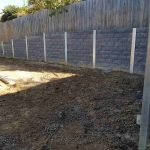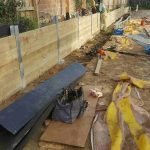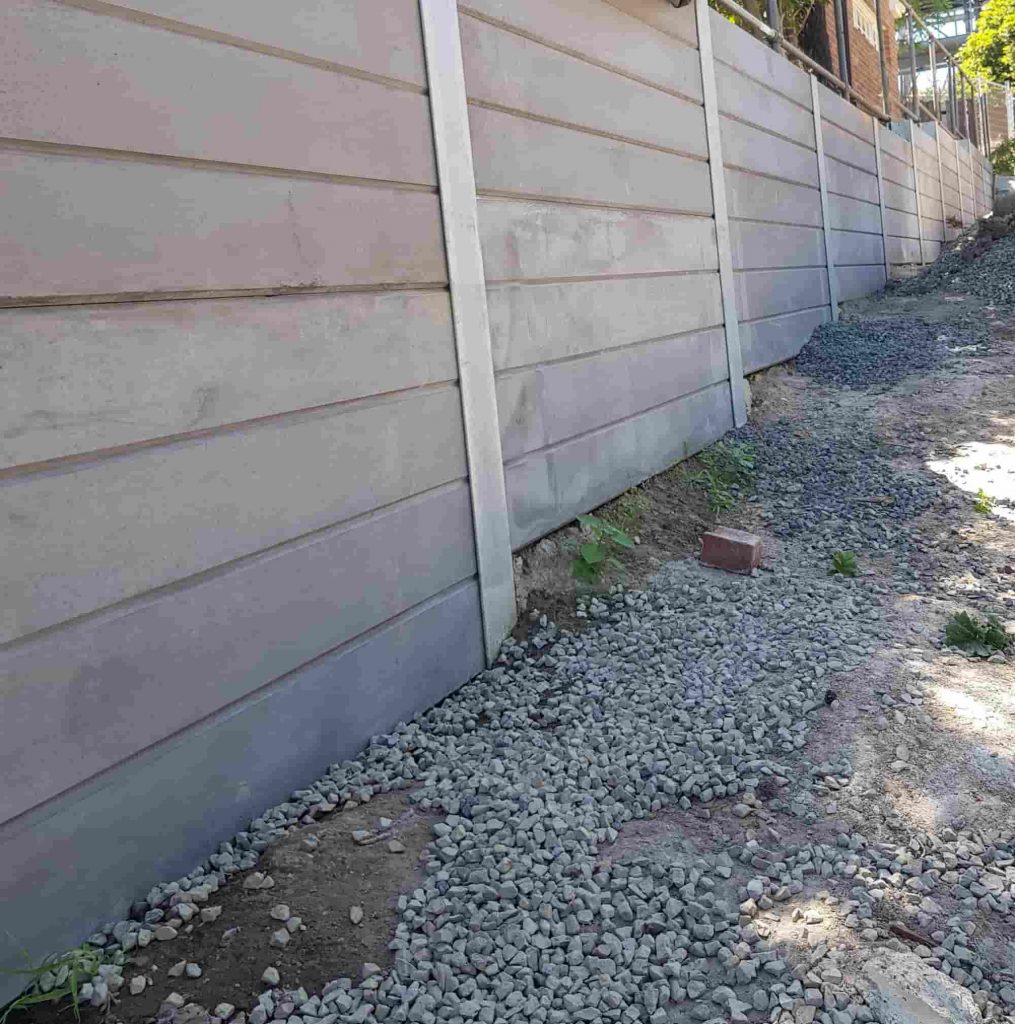Introduction
Building a maintaining wall isn't just about stacking stones or pouring concrete; it's a calculated undertaking that requires knowledge, planning, and the right materials. Retaining wall builders play an important function in ensuring your structure stands strong versus the test of time and nature. Whether you're considering a simple wood sleeper wall or a robust concrete option, understanding the nuances of maintaining walls can save you time, cash, and headaches down the road. This short article will dive deep into the secrets to a long-lasting structure, providing insights from retaining wall contractors and installers who know the ins and outs of this construction art.
Retaining Wall Home builder: Understanding the Basics
Tuff Stuff Retaining WallsWhat is a Keeping Wall?
A keeping wall is designed to keep back soil and manage changes in elevation. These structures are vital in landscaping, particularly on sloped residential or commercial properties. They prevent erosion and create functional acreage by keeping back earth.
Why Do You Required a Keeping Wall?
If you're dealing with steep slopes, flooding problems, or just wish to improve your garden's visual appeal, a keeping wall might be your best choice. They can also:
- Prevent soil erosion Create level surface areas for gardening Enhance residential or commercial property value Improve landscape design
Types of Retaining Walls: What's Best for You?
Concrete Sleeper Walls
Concrete sleepers are pre-cast panels often used in modern buildings. Their durability and strength make them an ideal option for many homeowners.
Advantages of Concrete Sleepers
- Long-lasting Resistant to weather elements Minimal maintenance
Disadvantages of Concrete Sleepers
- Higher preliminary cost Requires heavy devices for installation
H Beam Retaining Walls
H beam walls make use of steel beams driven into the ground to support horizontal panels. This design is especially efficient in high-load areas.
Pros of H Beam Solutions
- Exceptional strength Suitable for high-stress applications
Cons of H Beam Solutions
- Corrosion potential if not correctly treated More complex installation process
Wood Sleeper Walls
Wood sleeper walls offer a rustic charm but need more maintenance than other options.
Pros of Wood Sleepers
- Aesthetic appeal Environmentally friendly material
Cons of Wood Sleepers
- Susceptible to rot and pests Requires routine maintenance
Timber Sleeper Walls
Similar to wood sleepers but typically made from dealt with wood designed for durability.
Benefits of Timber Sleepers
- Affordable option Easy to install
Drawbacks of Timber Sleepers
- Limited lifespan compared to concrete or stone Vulnerable to extreme weather condition conditions
Stone Keeping Walls
Stone walls provide exceptional appeal and strength but can be labor-intensive.

Advantages of Stone Walls
- Timeless visual Very resilient when constructed correctly
Disadvantages of Stone Walls
- High labor costs Requires competent craftsmanship
Choosing the Right Materials for Your Wall
Factors Influencing Product Selection
Budget: Just how much are you ready to spend? Durability: Think about local weather condition conditions. Aesthetics: What look do you want? Functionality: Will it hold back heavy soil?Planning Your Retaining Wall Project
Step 1: Design Considerations
Visualize what you want your maintaining wall to attain-- be it functional or ornamental functions. Sketch out ideas before seeking advice from a professional keeping wall builder.
Step 2: Get Correct Permits
Regulations differ by place; ensure you have all necessary licenses before beginning construction.
Step 3: Website Preparation
Prepare your site by clearing debris and leveling surfaces as needed. Proper preparation can conserve considerable time throughout construction.
The Function of Retaining Wall Contractors
What Does a Retaining Wall Contractor Do?
A competent specialist examines site conditions, advises products, manages building and construction, and makes sure compliance with local codes.
How to Choose a Dependable Contractor?
Look for credentials. Read reviews. Ask for references. Compare quotes.Installation Process: Detailed Guide
1. Digging the Trench
The initial step involves digging a trench where your maintaining wall will sit-- this guarantees stability.
2. Leveling Base Material
Adding gravel or crushed stone helps provide drainage while keeping water far from the wall structure.
3. Laying First Course
For concrete obstructs or stone walls, this action is important as it sets the positioning for subsequent layers.
4. Including Drainage Solutions
Incorporating drainage pipes behind the wall avoids hydrostatic pressure accumulation which could lead to failure.
5. Backfilling
Carefully backfill around the wall utilizing proper products to reduce pressure on it while enabling proper drainage.
Maintenance Tips for Lasting Retaining Walls
Regular evaluation is key! Here's how you can maintain your retaining walls:
Inspect yearly for fractures or indications of erosion. Clean debris that may obstruct drainage systems. Repaint or treat wood surface areas as needed. Monitor plant life development near walls; roots can trigger structural issues.
Common Mistakes in Structure Retaining Walls
Neglecting drain solutions can lead to water damage. Skipping permits leading to legal difficulties later. Inadequate structure depth resulting in instability. Poor material choices based on aesthetics rather than function.FAQ Section
Q1: The length of time does it take to construct a retaining wall?
It generally takes one week or longer depending upon size and complexity.
Q2: Can I develop my own retaining wall?
Yes, however it's extremely recommended that you consult with professionals.

Q3: How deep need to my foundation be?
A structure must typically be at least one-third the height of your wall.
Q4: What avoids soil from pushing over my maintaining wall?
Proper drainage systems help alleviate hydrostatic pressure.
Q5: Can I plant vegetation near my keeping wall?
Yes! Just make sure roots won't jeopardize structural integrity.
Q6: Is working with a professional expensive?
While costs differ considerably, purchasing expertise pays off long-lasting through quality construction.
Conclusion
Building a dependable retaining wall isn't simply about looks; it's about creating enduring structures that stand firm against natural forces while enhancing property value and use. Armed with knowledge about products like concrete sleepers, wood sleepers, H beams, timber sleepers, and stone choices-- together with insights into appropriate preparation and setup-- you'll have what you require to make informed decisions about your project.
Whether you're considering DIY efforts or employing experienced experts like knowledgeable maintaining wall contractors or contractors, understanding each element discussed here will pave your method towards success in building a long-lasting retention option that meets both practical needs and aesthetic desires!
